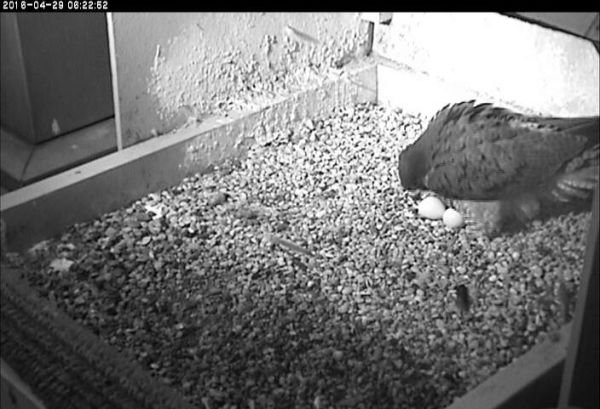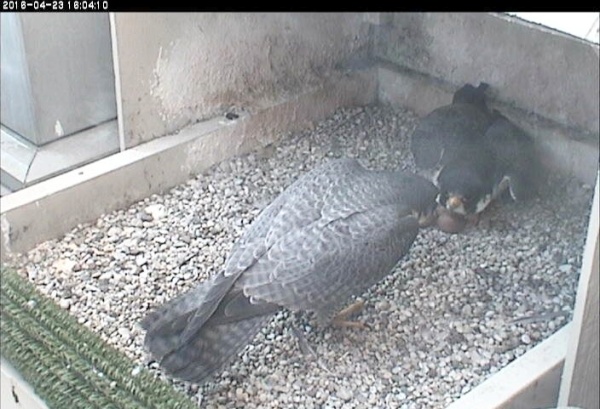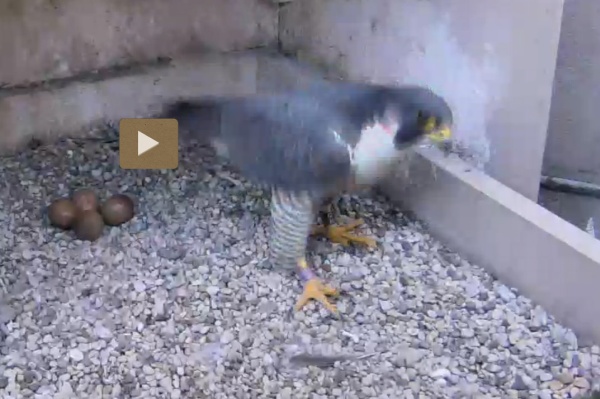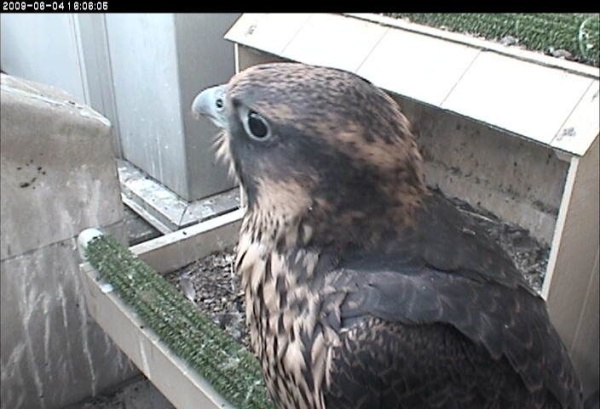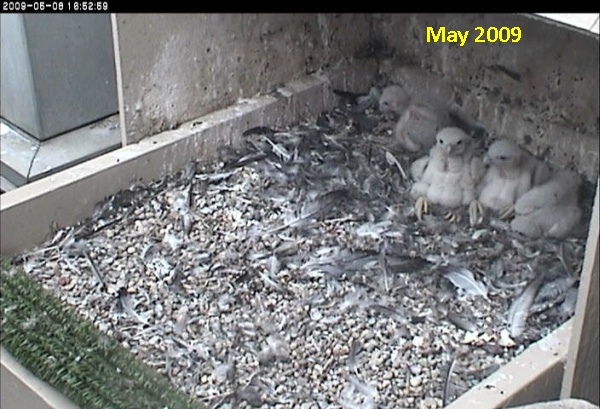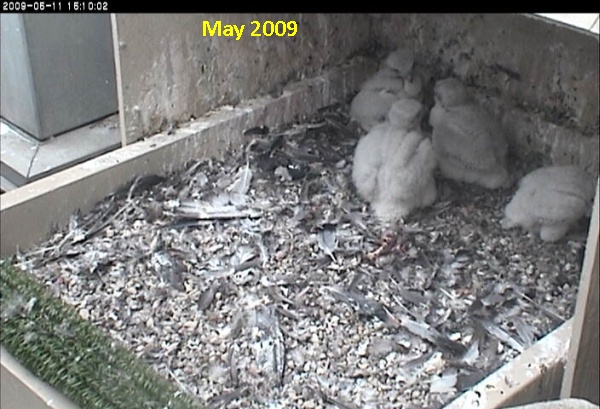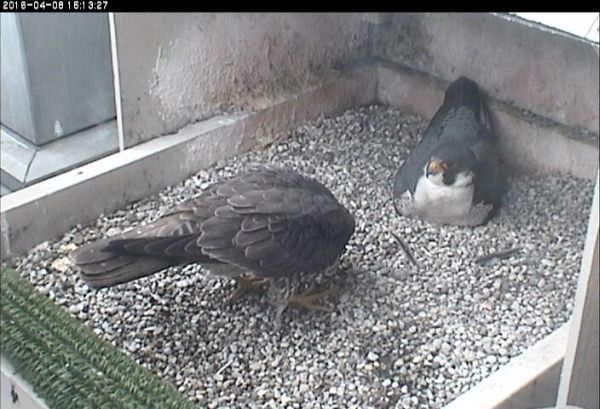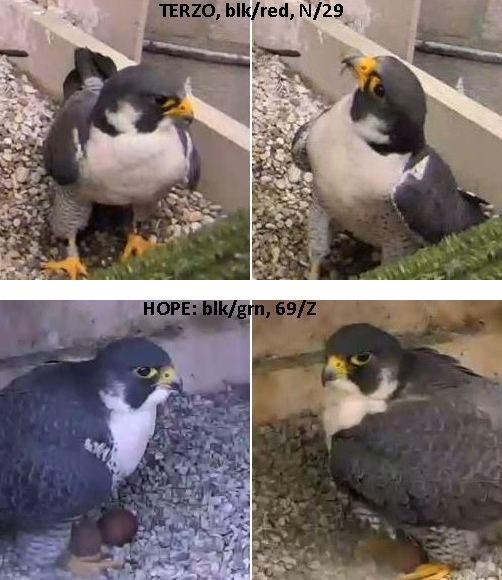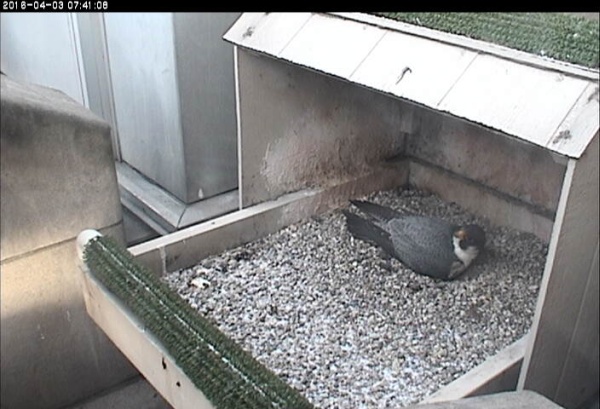
Yesterday morning we were excited that the first peregrine egg hatched at Pitt and looked forward to a second hatching later in the day.
At around 2:15pm the second egg hatched. Hope manipulated it, killed it, and fed it to the first chick.
This is not normal peregrine behavior.
Viewers were shocked and bewildered. Many of you had questions but I was out of cell range for most of the day, unaware that it happened.
I have never seen this behavior before and don’t know why it occurred. Here’s what we do know: Peregrines’ lives are very different from ours. Using our human yardstick to understand them — anthropomorphizing — really leads us astray.
I asked Art McMorris, the PA Game Commission’s Peregrine Coordinator, who viewed the archived footage and said the chick was alive but might not have been normal. In all his years of dealing with peregrines, Art has never seen this before either.
Hope’s behavior was so unusual that there is no information on it. Many of you speculated about it and asked “Is this why she did it?” In almost every case my answer is “I don’t know.”
A line from The Journey of the Magi by T.S. Eliot comes to mind: “But there was no information, and so we continued.” The rest of the poem applies, too.
And I would do it again, but set down
This set down
This: were we led all that way for
Birth or Death? There was a Birth, certainly
We had evidence and no doubt. I had seen birth and death,
But had thought they were different …
— excerpt from The Journey of the Magi by T.S. Eliot
We are learning a lot this year about unusual peregrine behavior.
And a reminder: If watching the nestcam upsets you, turn it off. Give yourself a rest. I do.
(photo from the National Aviary falconcam at Univ. of Pittsburgh)


